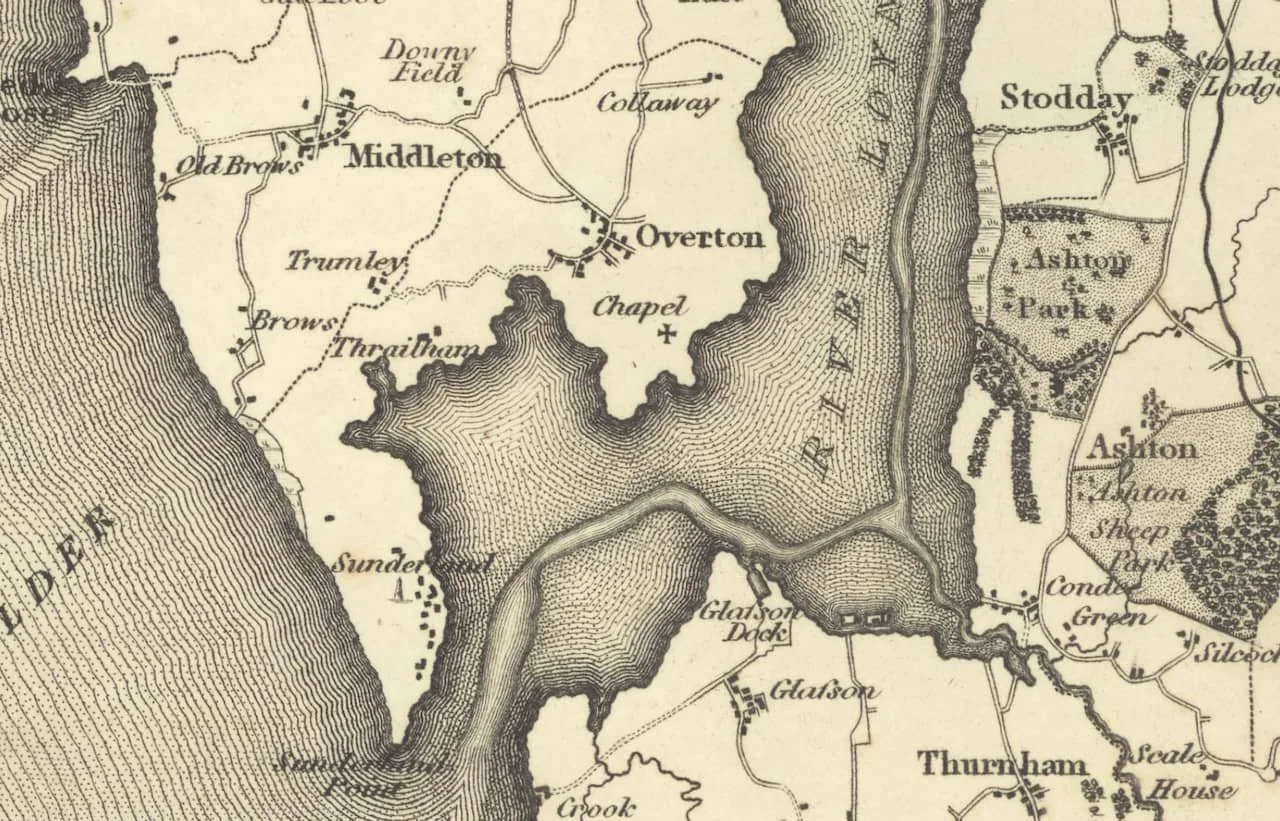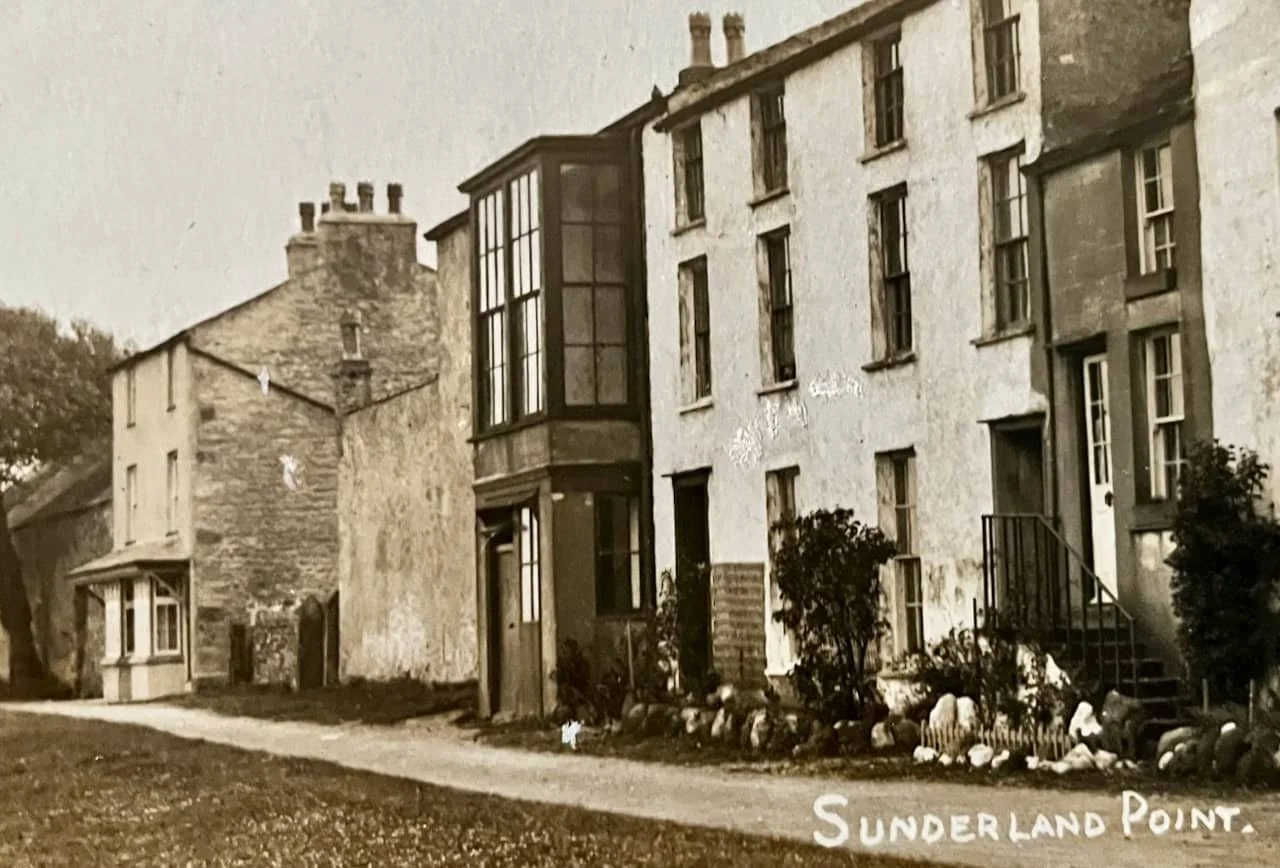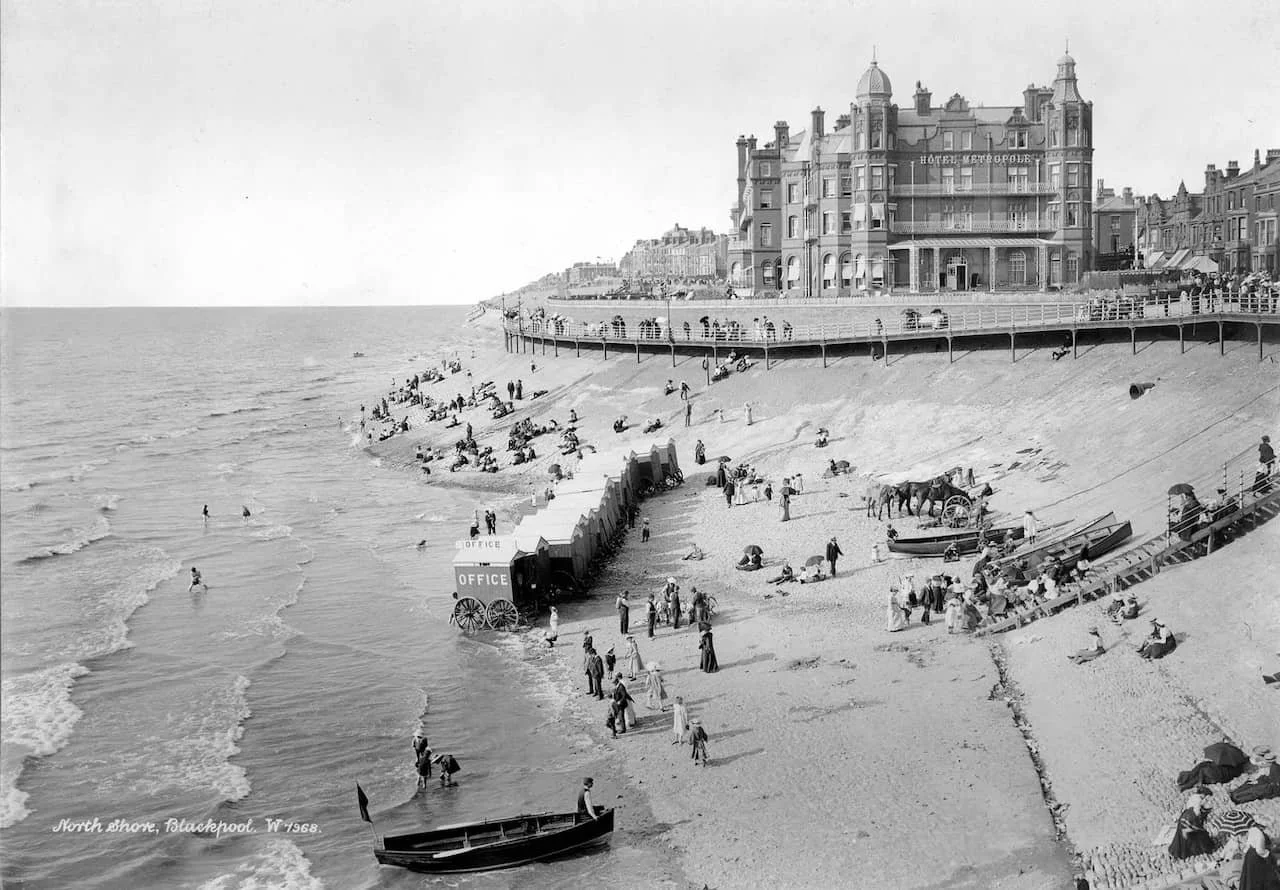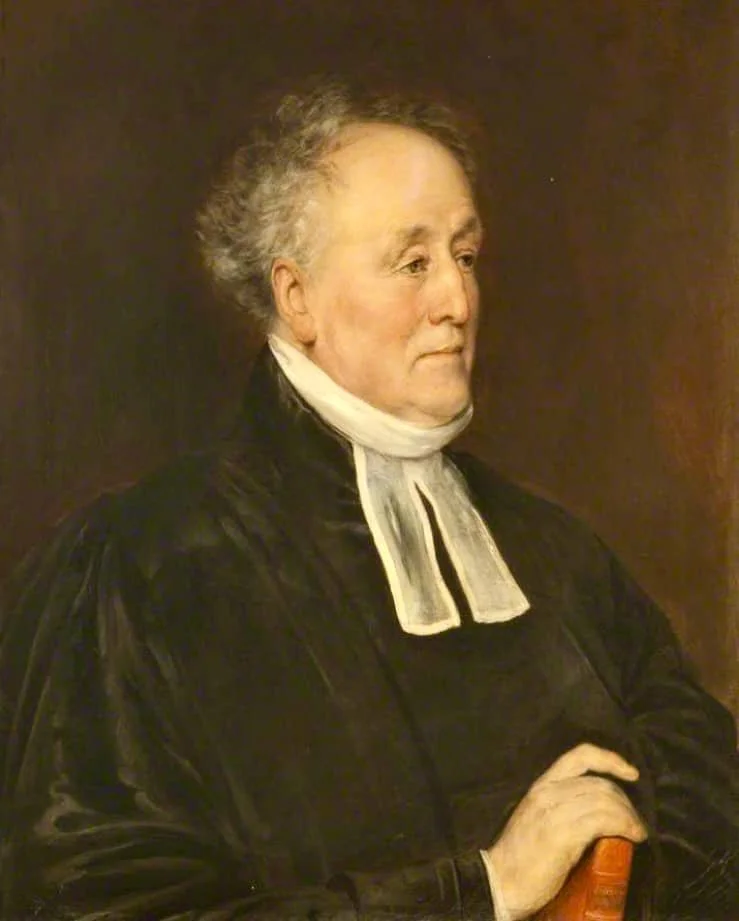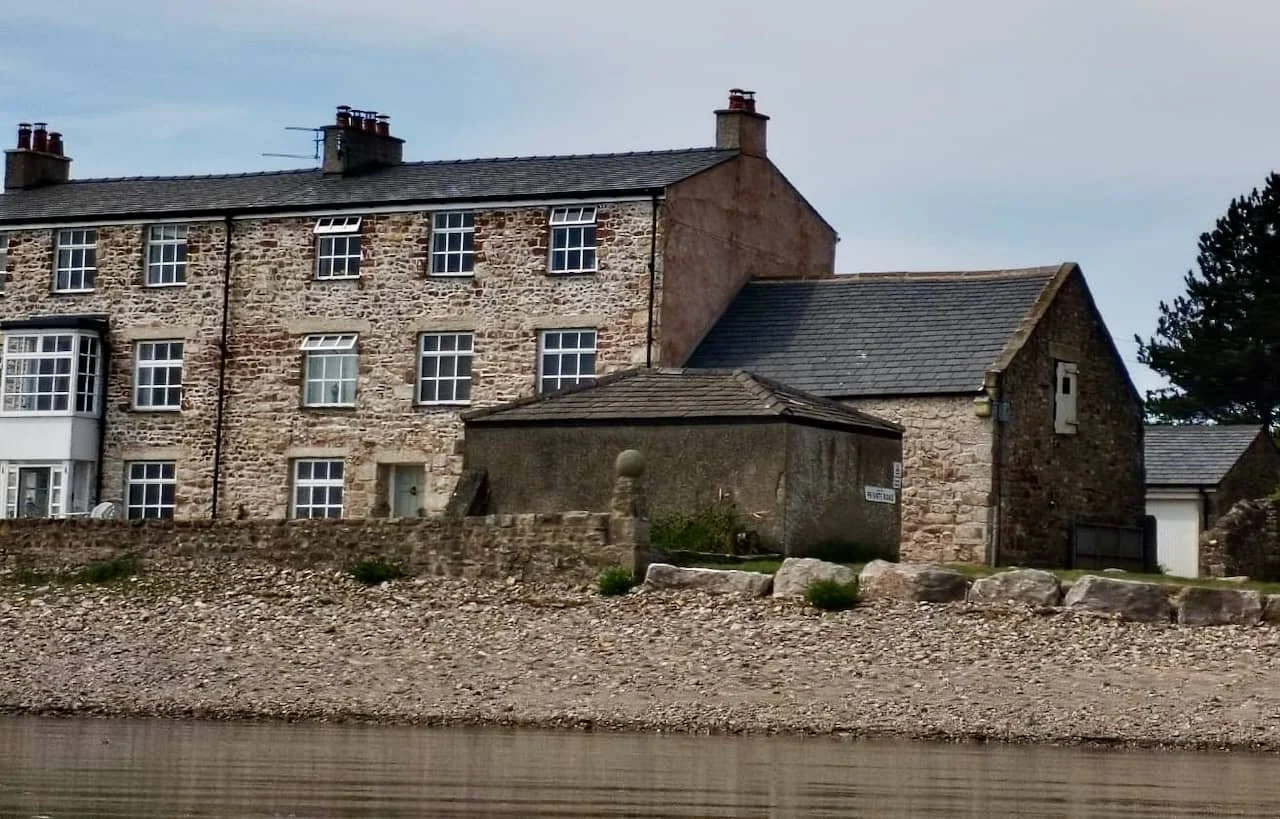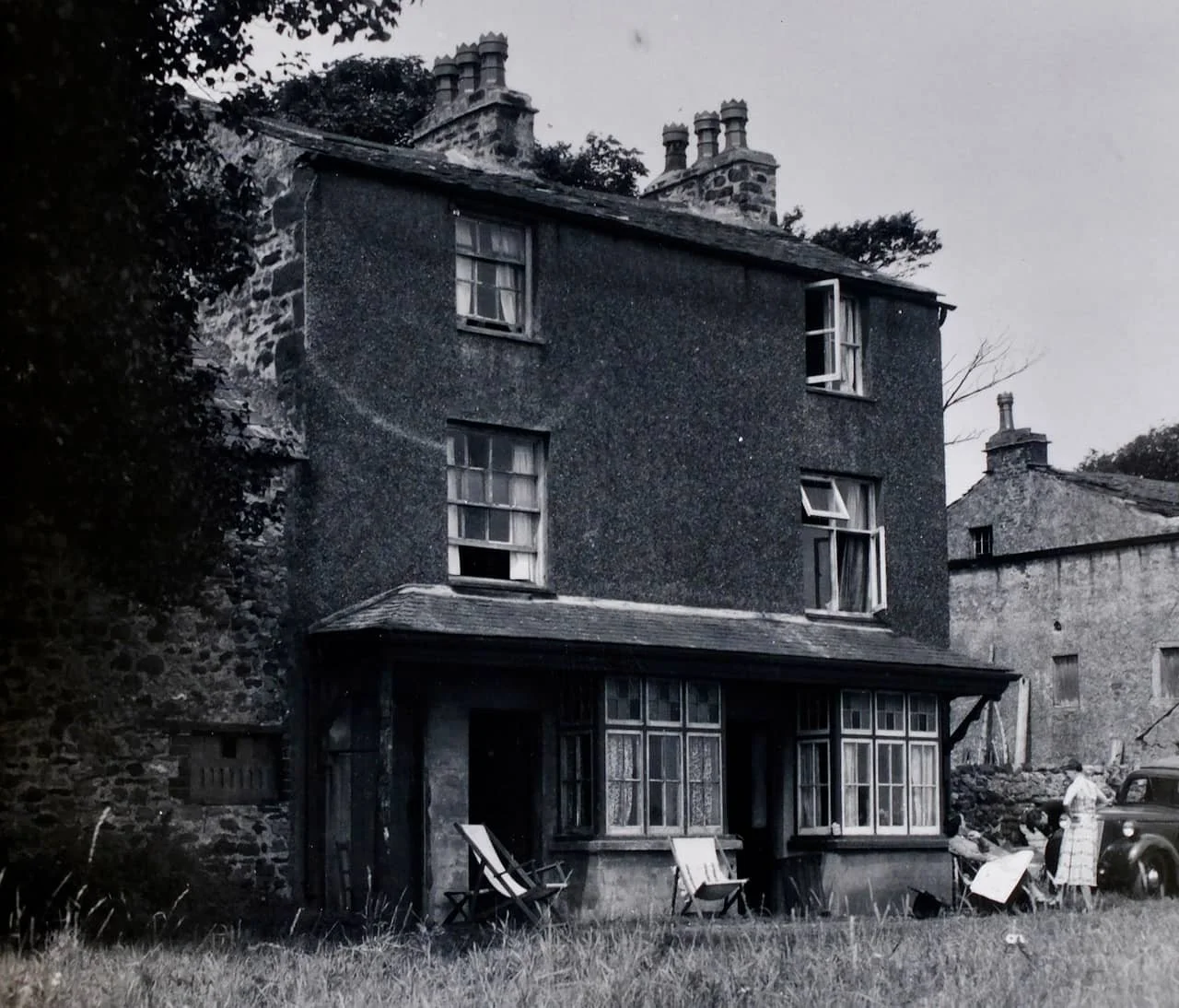Little Brighton by the Sea
That Salubrious Village on the Lune
This is Part One of Two.
‘The Hotel’ and ‘Bath ‘House’ today. (The house with the bay window and the square building opposite) Photo website.
Mrs. Francis Willoughby, middle-aged and possibly in poor health, is a wealthy spinster living in Derbyshire, ten miles south of Chesterfield at Higham Cliff House. She is surrounded by servants and ‘A large and valuable collection of fossils, shells, Foreign and English coins and numerous rare and singular curiosities.’
The Willoughby family can trace its roots back to the Norman Conquest, as can her close relatives, the Ferrers and the Gerards.
She has inherited the family fortune, with investments spread across several counties. Mrs Willoughby is an active businesswoman and is aware of a vague claim to property known as ‘Jackson’s tenement and closes’ (buildings and land) at a place called Sunderland near Lancaster.
Perhaps through her close relatives, she is aware that this place has become well-known for the seawater cure. Maybe from a distant relative, the Duke of Hamilton, who owns numerous estates, including Ashton Hall, just outside Lancaster.
This suggests, Mrs Willoughby decided to visit this respectable seaside spa offering plenty of sea air and saltwater treatments to check her claim and hopefully, do something for her health.
It is just on the other side of the river from the Ashton Estate.
1818 map showing Ashton Park, the opposite side of the river from Sunderland Point: Courtesy National Library of Scotland
Perhaps with the offer of Ashton Hall as a stopover, she pays a regal visit.
In 1814, the first recorded visit of Mrs. Willoughby to Sunderland Point took place. It would take three days by coach to reach Ashton Hall, where she would rest for a few days. Servants would be sent ahead to ensure the rented property – the Big House – was cleaned, fires lit, beds aired, and the garden weeded.
The ‘Big House’ now serves as the reading room and two maisonettes. The imposing entrance and bay window may date from the 1820s: Collection Hugh Cunliffe.
Her Ferrer relatives have travelled with her; A boat will carry the party across the river, and respectable visitors will welcome her at the Point.
The fresh air works wonders. It suits her. She likes it and buys the Big House.
The Second Golden Age
Looking back today, it’s hard to believe it was so famous – but it was.
From 1806, the Lancaster Gazette published ‘visitor lists’ and we find the names of prominent merchants in Lancaster and Liverpool, textile manufacturers, lawyers, architects, and builders. Many had been or would become Mayors of Lancaster. There were churchmen of many denominations, and the Governor of Lancaster Castle Gaol.
Importantly, the women outnumber the men on the visitor lists. Not just parked here while husbands and sons got on with business – it was the fashionable place to be. Many of the families were related, so it was an opportunity to swap the latest news and gossip, catch up on the latest fashions, and likely arrange betrothals and marriages.
Although popular with Lancaster families well into the 20th century, the forty years from 1790 to the Regatta of 1830 is the second era of greatness for Sunderland Point.
A small dose of background.
The full opening of Glasson Dock in 1787 marks a neat ending to the first era of maritime activity as the out-port for Lancaster's merchants.
Poor Sunderland Point. The warehouses of Second Terrace stand empty, and the workshops on First Terrace are silent. The owners may have scratched their heads for a moment, but they did not need to look far for inspiration. What followed was not just a reinvention — it was a transformation.
Seawater Bathing
From the 1750s and 1760s, well-to-do folks began to visit Blackpool for the health benefits of sea air and saltwater bathing. It had become a national movement made famous by the Prince Regent and his support for the other and bigger Brighton by the sea.
By 1790, the first public advertisement for Blackpool as a seaside bathing resort appeared. Facilities for visitors started to develop, including bathing machines, lodging houses, and Inns.
For seasoned men looking to salvage something from their investments, they were quick to spot the opportunity. A leisurely boat trip from Lancaster, sound buildings ready for renovation, the salty sea, and plentiful sea air. What’s not to like?
Who was responsible?
Just two years after advertising started at Blackpool, we see this from George Jackson at the Ship Inn.
George has recently prepared the Ship Inn for sea bathing. Importantly, he has ‘completed two bathing houses for the purpose’ (probably houses numbered 8 and 9 today, known to date from this period)
Numbers 8 and 9 First Terrace: Website photo
The absence of maritime bustle will have killed the all-year-round Inn trade. This is a significant investment designed to bring customers to the Inn and summer tenants to the lodging houses. George owns a couple of other buildings and 30 acres of land on either side of the Lane. Most of the rest of the Point in 1800 was owned by the descendants of Samuel Simpson.
Samuel had been the ship's captain who later became an owner of ships and an investor in the West Indies trade. Many of his transactions were in the company of Thomas Hinde, the best-known Lancaster trader in enslaved Africans.
This map, which blazes his name over the peninsula, confirms his majority ownership.
Yeats Map of Lancashire 1786: Courtesy the National Library of Scotland.
Samuel had died in 1793; his eldest son, also Samuel, continued the family business, and while the exact sequence of events is unclear, Samuel, with his siblings, began the process of warehouse modernisation.
Apart from Hall End House, sold in 1803, the family retained ownership of all the properties until the late 1810s, by which time the transformation to ‘Little Brighton by the Sea’ was almost complete.
A growing reputation
As early as 1807, the Point had become so popular that a ball was given (most likely in the ‘Big House’), recorded at the end of a visitor list.
Lancaster Gazette 12th September 1807
Arrivals at Sunderland near this town - Mr and Mrs Bower and family, Mr and Miss Parkers, Mr and Mrs John Noble and family, Mr and Mrs James Noble and family, Mrs Postlethwaite and daughter, Miss Threlfall, Mr and Mrs Parks and family, Miss Scott and 3 Mr. Sprawncers (?), the company being so numerous, a ball was given on Tuesday last.
William Higgins, a portrait painter, was in residence in 1809. (The Gazette reports the death of his wife in May).
After George Jackson died in 1809, the Ship Inn was owned by James Birkett. He proudly advertised in 1813.
Courtesy Guardian Newspapers
Hugh Cunliffe, in his history of the Point, says this was the first bathing machine in this part of the coast.
Bathing machines at Blackpool, later in the century, the Hotel Metropole in the background: Courtesy English Heritage
In the newspapers, we see properties advertised for summer lets—Samuel Simpson Junior at the Old Hall, and Miss Wright at Hall End House.
In 1814, the ‘Big House’ (where the Reading Room is) was available to let for the summer season. It boasts at least five bedrooms, a butler’s pantry, and a servants’ hall. What might have been of particular interest to Mrs Willoughby was the fitted water closet inside the house.
The 1814 Gazette visitor list confirms her presence at the Point with her Ferrer relatives, as are members of the Simpson and Hinde families and other notables, including the Rev. John Manby, vicar at St. Mary’s, the parish church of Lancaster. Before his move to Lancaster, he had been the private chaplain to the Duke of Sussex, the youngest son of George the Third. He later owned number 7 as a summer residence.
The Rev. John Manby: Courtesy Lancaster City Museums.
In the 1818 visitors’ lists, 78 names were mentioned in three lists.
The Situation is Salubrious.
This is from an advert from 1816.
A House and ONE or TWO COTTAGES, completely furnished – The situation is salubrious, the adjoining sands extensive, and calculated for invalids, having Hot and Cold Sea Baths.
Surviving infancy, the typical lifespan was between 50 and 60 years. Medical intervention was available but offered limited benefits. It would be unusual not to have some longstanding malady, such as gout or rheumatism, for those with even modest wealth; a sea water cure may be just the ticket.
Let’s assume Sunderland Point was similar to other seawater spas; visitors would be expecting to find these features.
‘Taking the air’ was believed to be bracing, health-giving, and a welcome opposite to the recently smoke-filled industrial towns.
Sea Bathing, or ‘cold water immersion’, often involved a bathing machine, rolled down to the water for modesty. Immersion was brief and supervised by ‘dippers’. Thought to be good for such ailments as nervous disorders, skin disease, gout and infertility.
Sea water to drink (mixed with milk or herbs to mask the horrid taste) is believed to act as an internal cleanser. We bet it did.
As the spas grew more sophisticated, special baths and showers were installed, providing indoor warm or cold seawater treatments. These were considered most suitable for the elderly, the ill, or refined ladies. (Just like Mrs Willoughby).
The first reference to saltwater shower baths at SP appears in 1818, in an advert letting several ‘lodging houses’ on Second Terrace.
Lancaster Gazette 6th June 1818
TO BE LET AT SUNDERLAND, near LANCASTER During the sea-bathing season, Several Neatly-furnished Lodging-Houses, each consisting of two sitting-rooms, four bed-chambers, kitchen etc. etc. with the accommodation of Hot, Cold, and Shower Baths.
Perhaps this confirms the existence of the celebrated ‘Bath house’.
The Bath house from the river in 2025: Photo Philip Smith
The Bathhouse, c1900, A John Walker photograph courtesy of Lancaster City Museums.
This second photograph may be a glimpse of what it was like earlier in the century. We see a door in the river-facing side of the building (and steps leading down to the shore (absent in the modern Photo).
We suppose this is for the unfortunate servant tasked with going to the shore to gather buckets of seawater to be warmed for the lady’s bath.
External bathhouses were common in seaside spas. The simple structure of the bathhouse suggests an early construction date, they would become more ornate later.
Not to be outdone, James Birkett at the Ship has installed comprehensive saltwater treatments. He advertises the news in 1823.
Courtesy Guardian Newspapers
Improbably as it seems today, the baths were in the basement of Upsteps Cottage.
Upsteps Cottage in 1914: From the collection of Hugh Cunliffe
Also expected were social and recreational activities. In addition to pleasure boats on the river, the men will have organised races and regattas. It’s said there was horse racing in the fields at the top of the Lane.
The ladies will organise games of cards, parties, musical evenings and balls (with proper dressing, indulgent refreshments, musicians, and dancing).
Changes of ownership
By 1818, the Simpson family had sold all their properties. Except for the three Hall End houses, the Old Hall, Hall End House and Hall End cottage, all the other Second Terrace houses (today numbers 13 to 20) were bought by Mrs Willoughby. The last warehouse (today numbers 18 and 19) was modernised under her instructions.
Numbers 18 and 19 in the 1950s: From the collection of Rosemary Thacker
It seems likely that Mrs Willoughby either permitted or promoted the conversion of a lodging house (today number 14) into a licensed hotel in 1819 - perhaps as a business venture or for the virtuous supply of alcoholic beverages on Second Terrace.
This recently discovered advert from the Gazette in 1819 announces the arrival of the ‘new hotel’ with hot and cold showers.
Courtesy Guardian newspapers
In 1820, John Duckinfield took on the tenancy of ‘The Hotel’, relocating from Belper in Nottinghamshire. Likely encouraged by Mrs Willoughby, as Belper is only 8 miles from Higham Cliff House, he is also responsible for letting her other properties. John places an advert in the paper stating that he:
Respectfully informs the public that he has entered upon the HOTEL and cottages &c at Little Brighton, Sunderland, near Lancaster, where he solicits the patronage of the public.
TERMS – Neat and convenient cottages, genteelly furnished, plate & linen excepted. By the week from £1.0.0. - £2.10.0 For the season or until Lady day 1821 - £15.0.0 - £35.0.0. There are warm, Vapour, and shower Baths with Pleasure Boats and bathing machines, etc.
Notice he has added ‘Vapour’ baths to the offering, believed to refer to steam baths – an early form of sauna.
Mrs Willoughby succumbs to her ailments in early 1821. The property is kept within the family through her nieces, Catharine Ferrers and Mary Martha Ferrers, the latter in the name of her husband, John Bruno Bowdon.
The Big House was let as a summer residence to another illustrious couple, John Alexander Hunter Esq and his wife Patricia, daughter of Sir Jonah Barrington, Judge of the High Court of Admiralty in Ireland, also using the house is John’s mother, the remarkable Mrs Harrision, of whom much more later…
John Duckinfield leaves The Hotel in 1821, and the sixteen-year tenure of John Gerrard Junior begins. He has been learning the ropes at the Globe Inn in Overton.
Throughout the 1820s, he was a consistent advertiser. In April 1823, with a growing clientele, he says, ‘in consequence of an overflow of the most respectable company, he has substantially enlarged his house.'
In May 1824, in the Gazette, he and his wife, Eliza, announced a further expansion, now called ‘Gerrards Hotel’.
SEA BATHING – GERRARDS HOTEL, Sunderland
John & Eliza Gerrard gratefully return their sincere thanks for the patronage they have experienced from their friends and the public, and having now added to their establishment the adjoining premises, they beg leave to say they can offer superior accommodations to families and gentlemen visiting Sunderland during the Bathing Season. The apartments for families possess every requisite for domestic comfort.
This is probably number 13, but it might be ‘multum in parvo’, the infill house, now number 15.
Still growing
In 1824, the Gazette reported significant improvements to the tidal causeway, including the rebuilding and widening of the bridges. This, they said, was ‘Likely to render the village very attractive this season’.
The enterprising James Birkett has installed a billiard table at the Ship Inn, believed to have been in a purpose-built room above the cart shed adjacent to the Wynt.
A carrier was running twice a week between Lancaster and the Point and almost daily during the season.
By 1828, Sunderland was described as a place ‘much resorted to for sea bathing where the air was considered particularly salubrious’
A tidy First Terrace, c1900, a John Walker photo: Courtesy Lancaster City Museums
Next time, in part two, the high point is reached, and some exciting events take place, followed by a gradual decline. Do join us then.
Special thanks once again to Beth Hampson, whose help and advice were invaluable.

